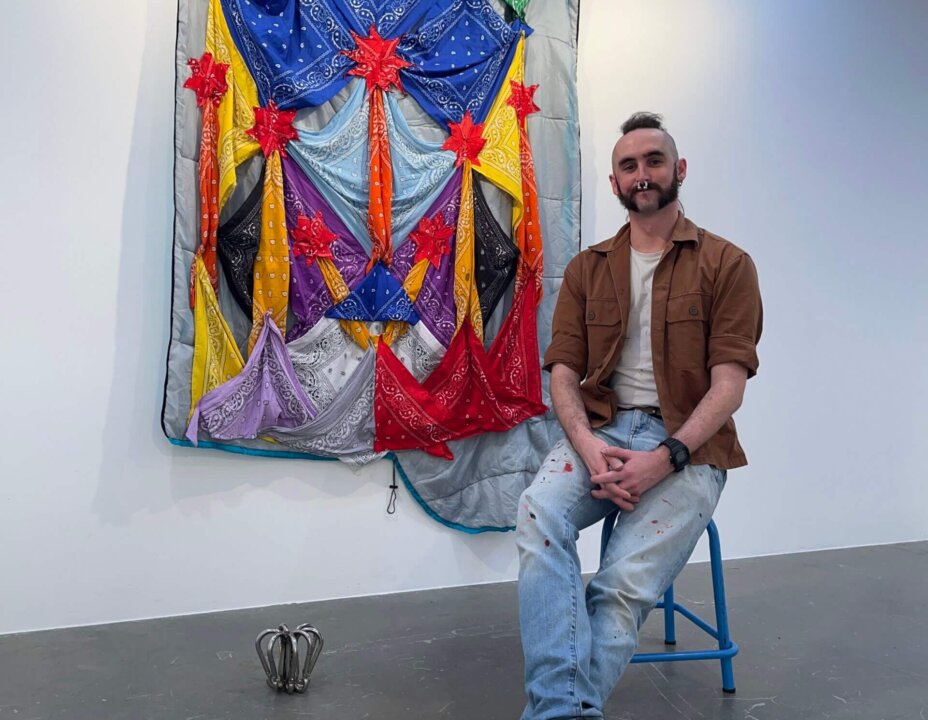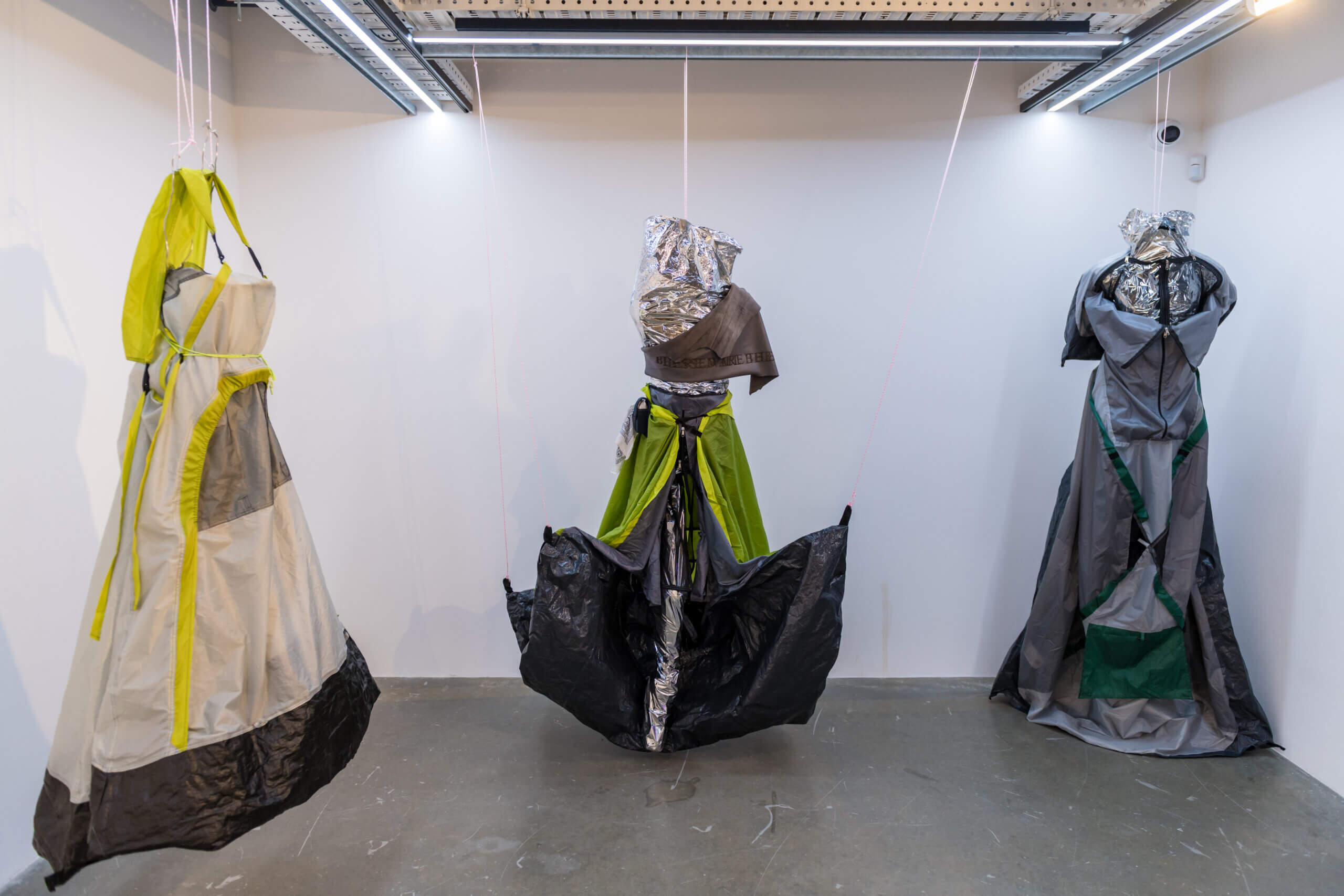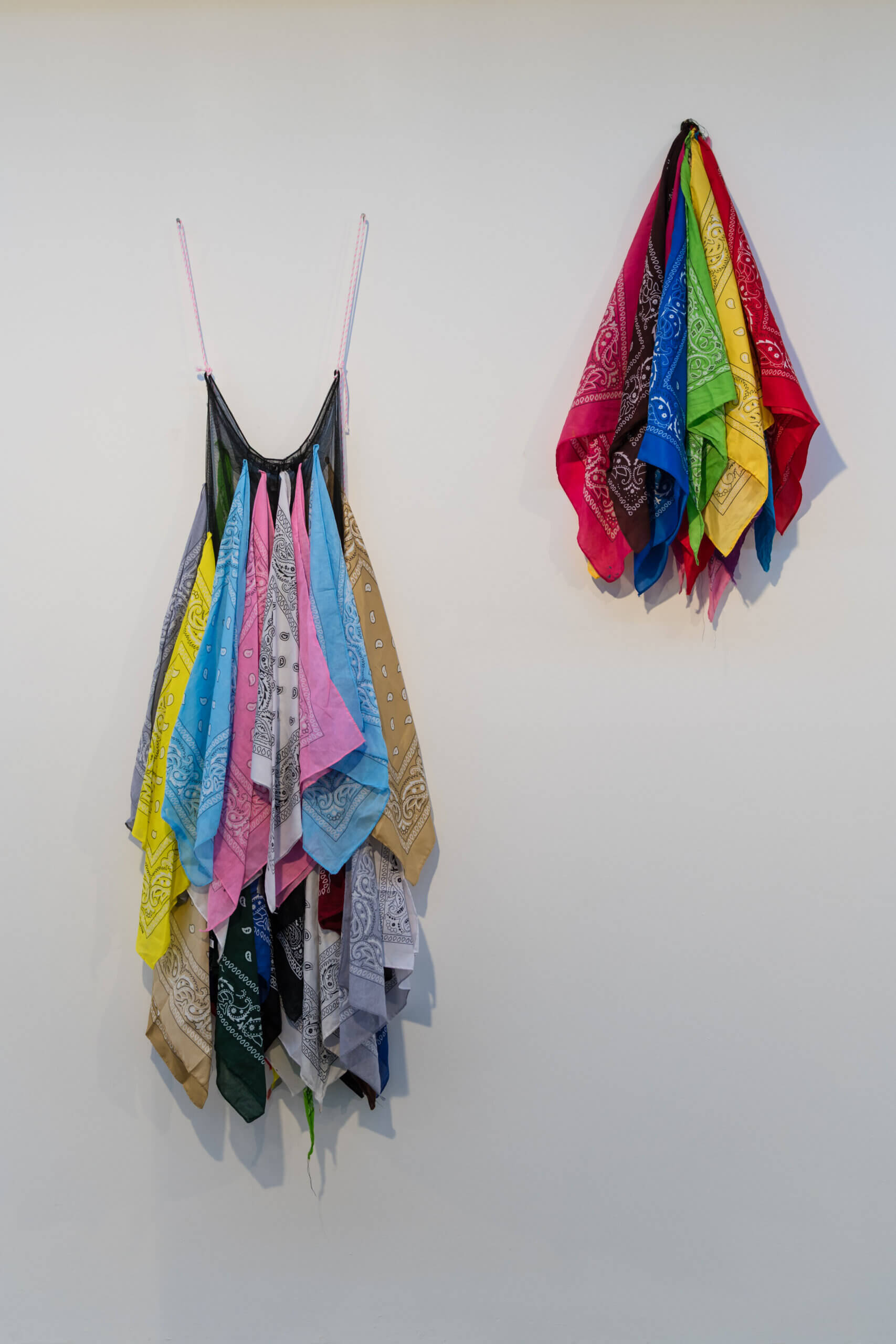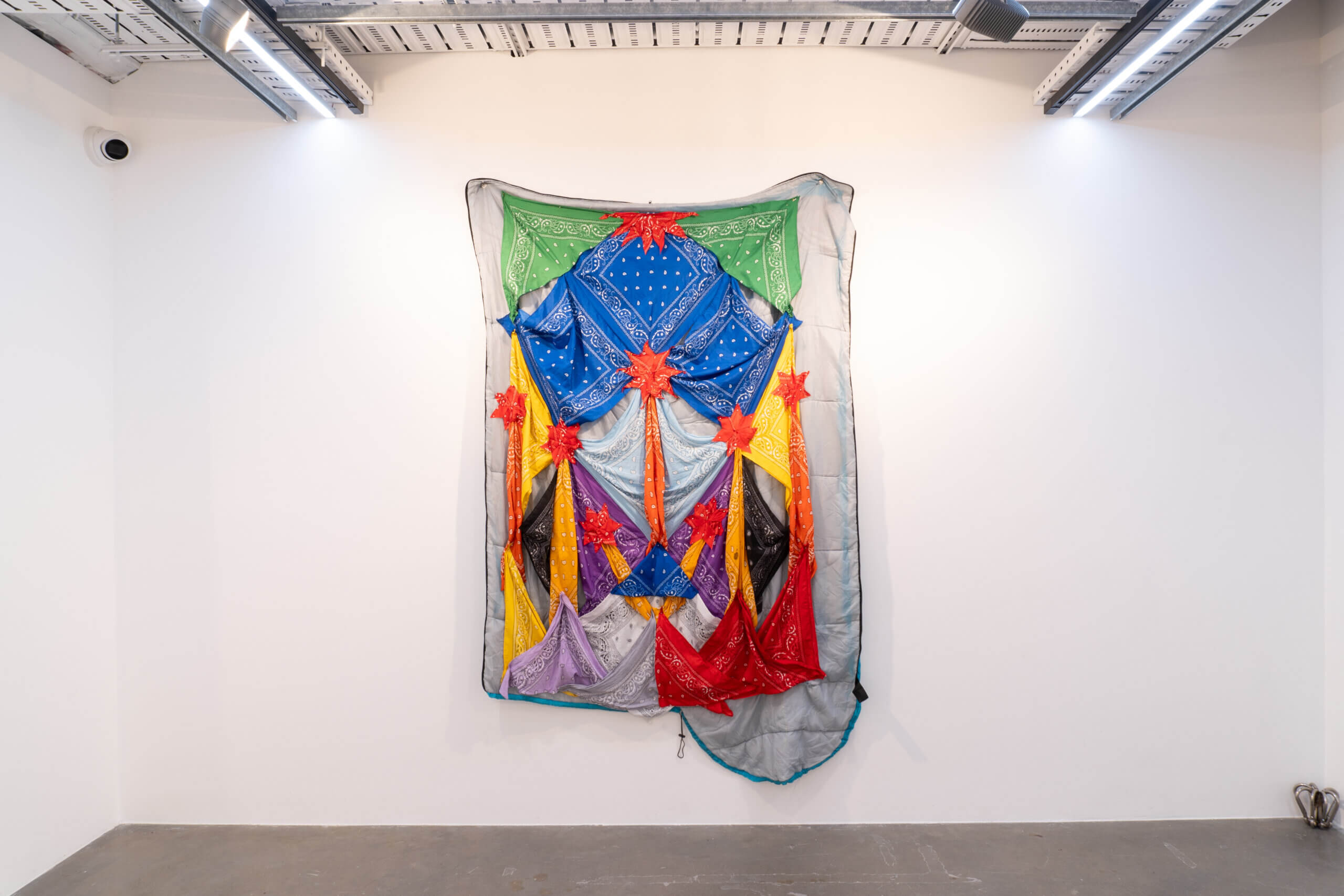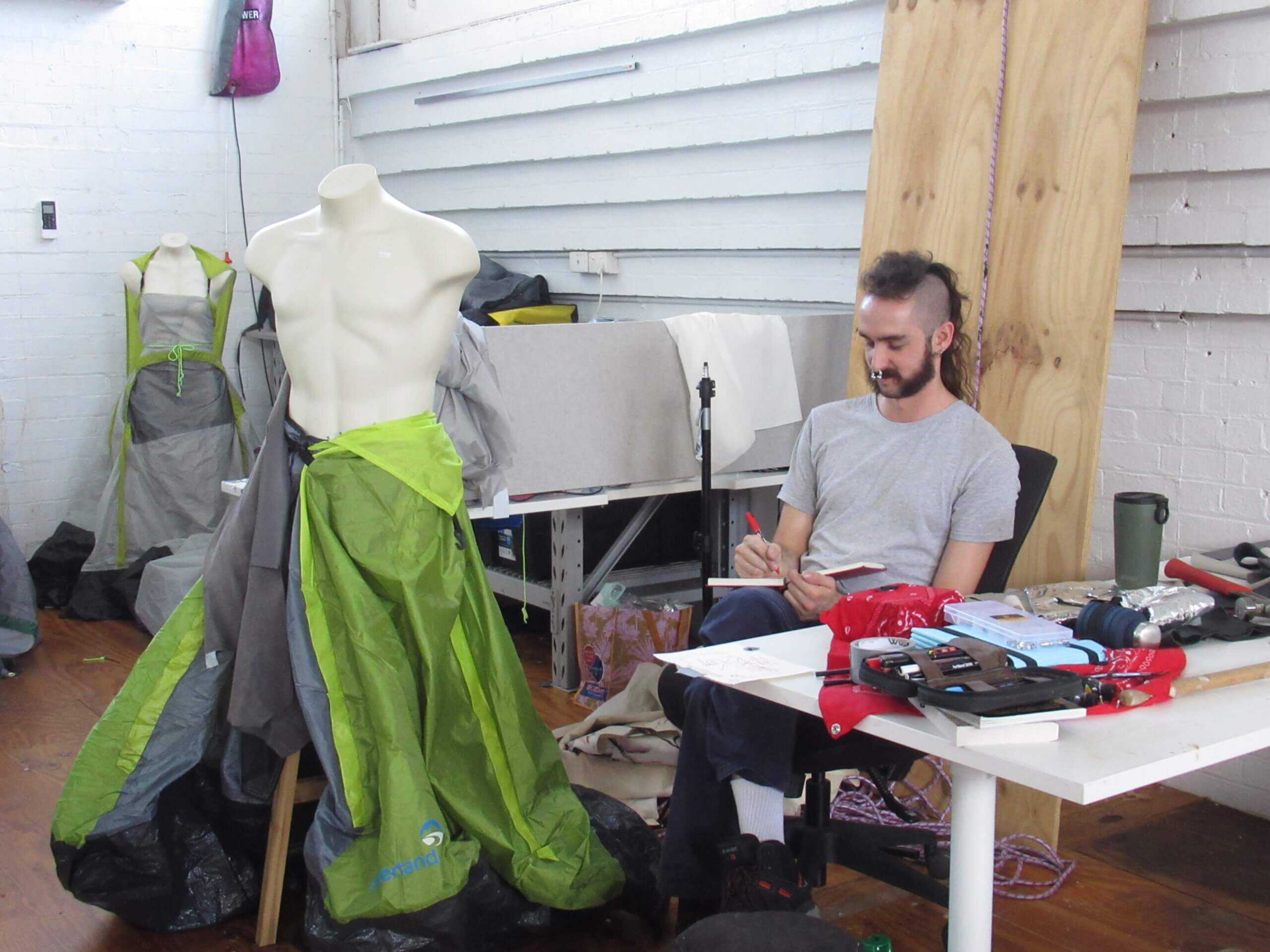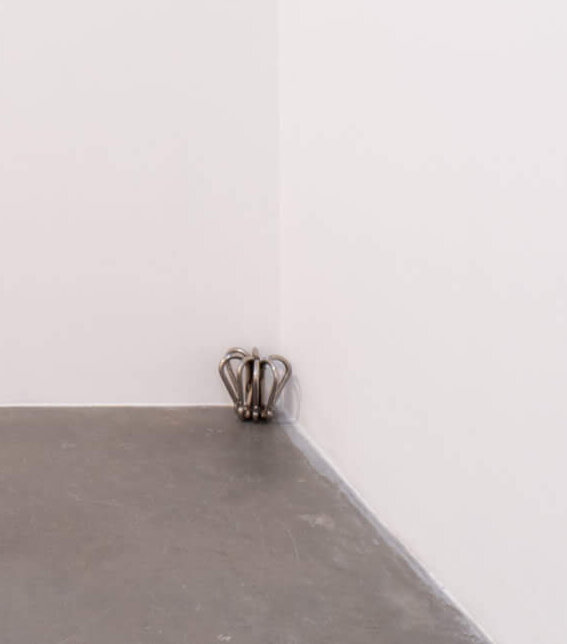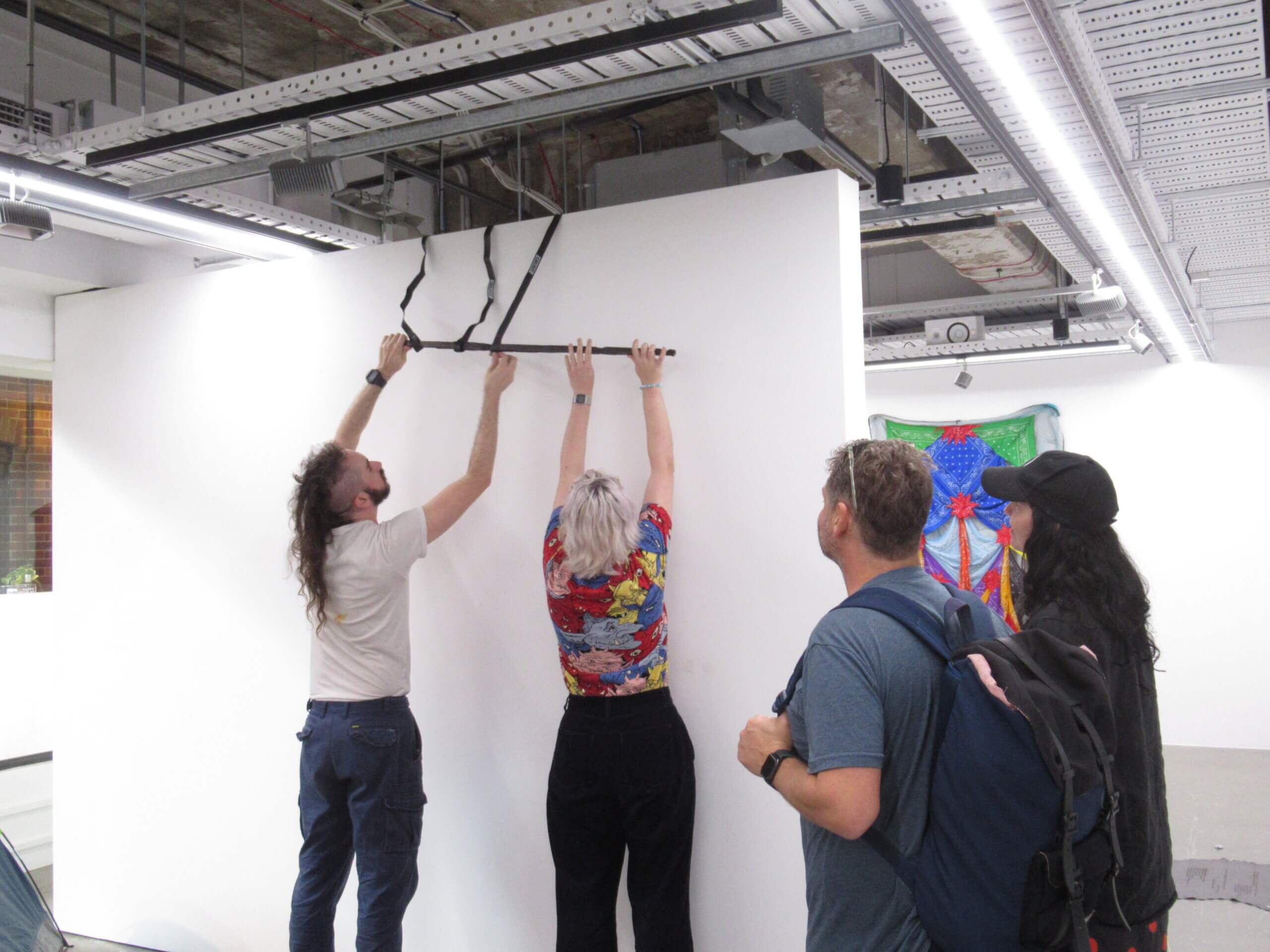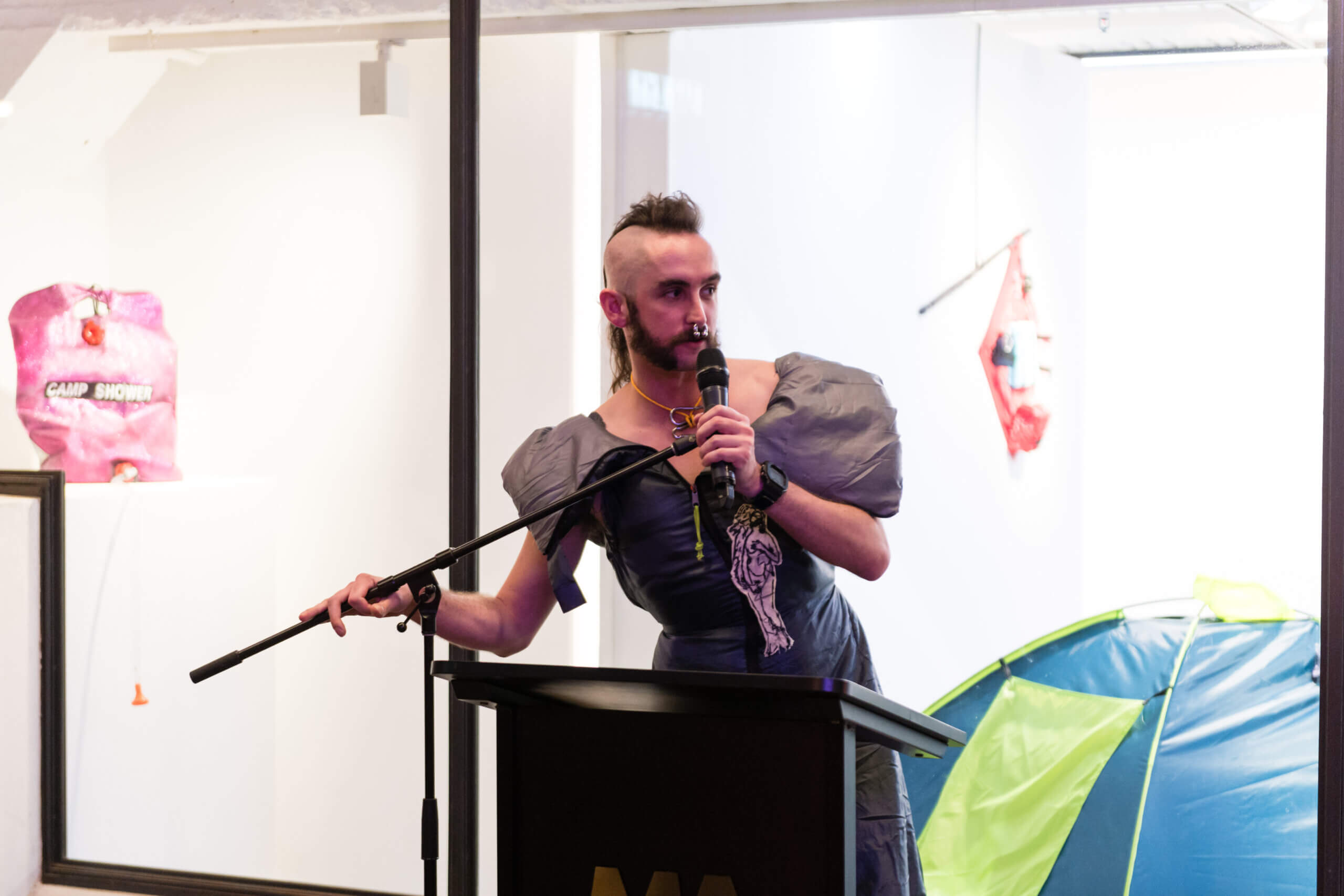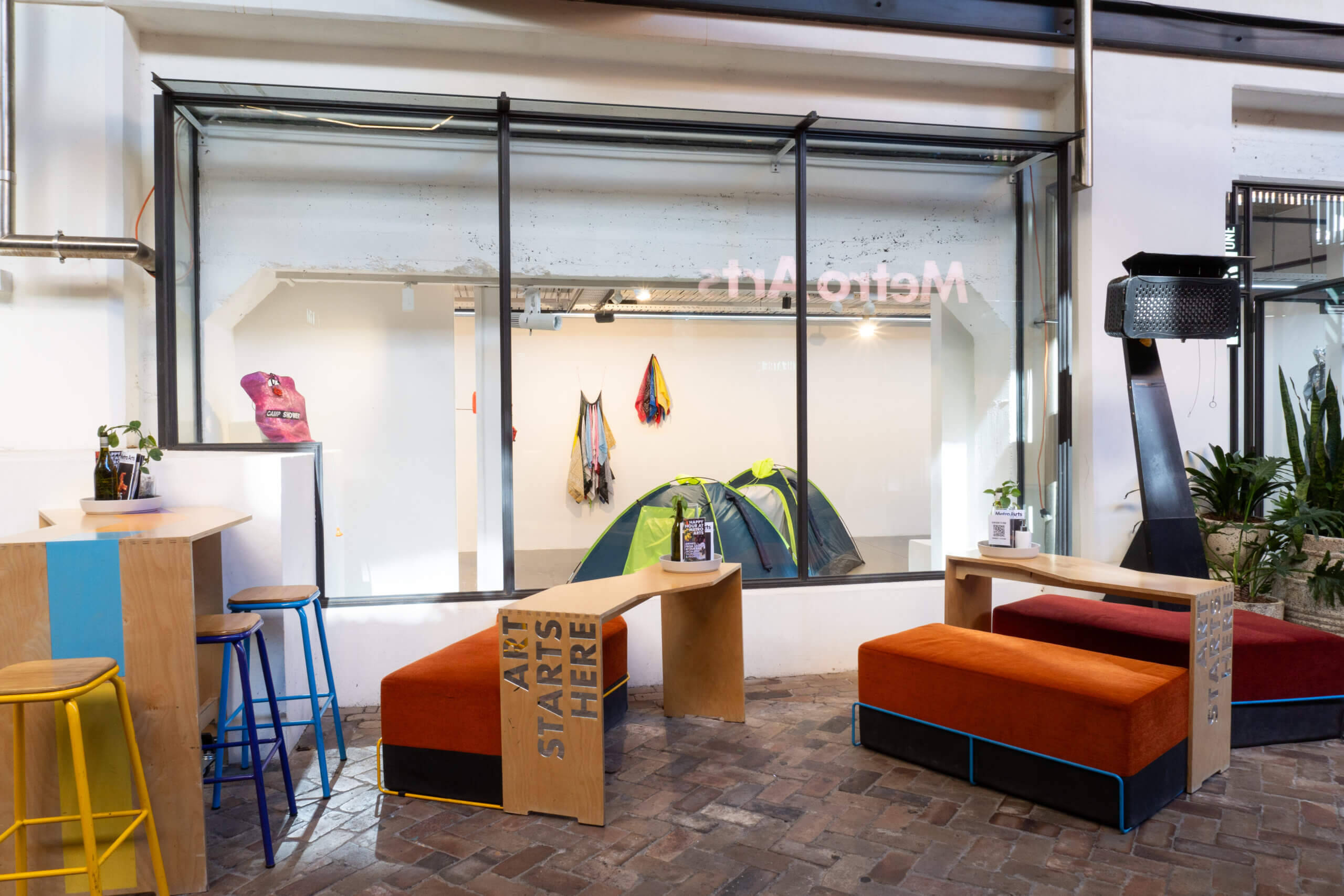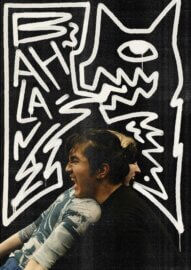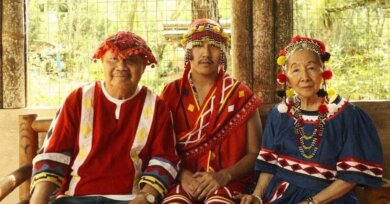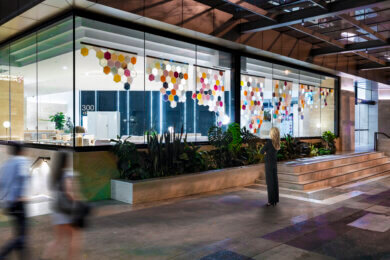Many of the works in That I Should Pray For Angels, as well as previous exhibitions, are heavily coded in meanings. I draw quite heavily from scripture, pop culture/current affairs and queer existence. I especially love using existing images or creating my own motifs that represent these concepts.
In Angels there’s an immediate focus on camping/prepper gear and hankies, both linking to physical survival and survival of knowledge. looking deeper into the work there’s repetitive use of metal, inorganic fabrics and materials like nylon and tarp, unnaturally dyed leather, fibreglass. This material choice stems from the manifesto of this work, taken from the Book of Enoch, which details forbidden forging skills taught to humans by fallen angels. The use of these entirely unnatural or heavily manufactured elements represents the apex of this consumption of forbidden materials, the things that have led to our downfall, being the materials that supposedly exist for our survival.
My process often looks like this: I begin with an exhibition title, which often emerges from research or reflection, and then work back from there creating pieces under this guiding star of sorts. Once I establish my material motifs and methods, I feel I can imbue each work with a sense of the narrative. I feel that this creates a space where even if viewers are unaware of the links being made, the materials in space carry the meaning.
